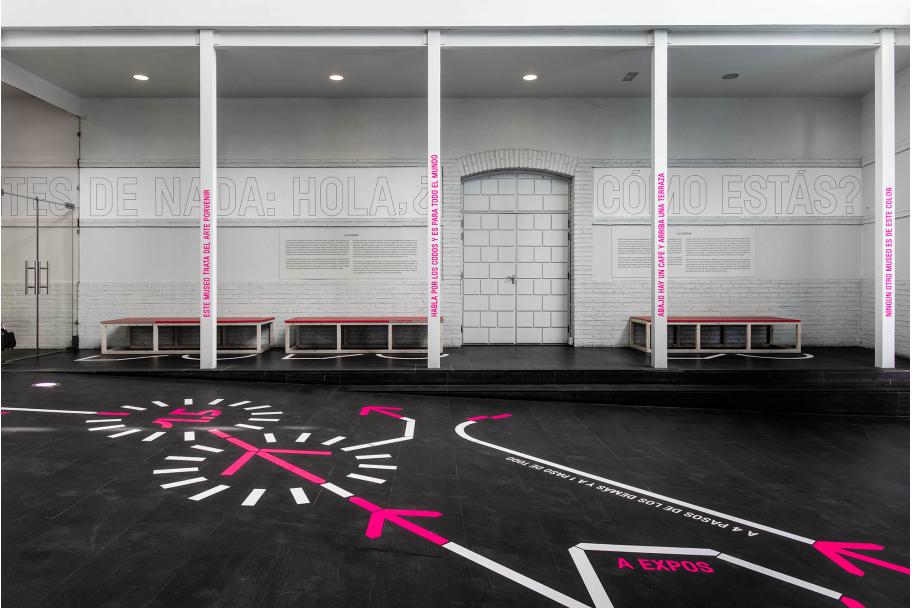The CA2M, in the Region of Madrid, receives a special mention by the CIMAM for its good practices in a time of crisis

Picture: Sue Ponce.
- Awarded by the International Committee for Museums and Collections of Modern Art – an Affiliated Organisation of ICOM.
- For the project: Low Institutionality for us to Adapt to a Coexistence in Times of Covid.
19 November 2021. The Museo Centro de Arte Dos de Mayo in the Autonomous Community of Madrid has received a special mention in the first edition of the Awards for Good Practices in Times of Crisis granted by CIMAM (International Committee for Museums and Collections of Modern Art), an Affiliated Organisation of ICOM (International Council of Museums).
At a time when institutions are still adjusting to the circumstances and temporary situation of the current health of its citizens, CIMAM wanted to highlight the proposal that the Museo Centro de Arte Dos de Mayo has put forward in the physical sphere to adapt to new uses for its spaces with the project: Low Institutionality for us to Adapt to a Coexistence in Times of Covid.
In these times of climate crisis, the CA2M has decided to learn from this global pandemic by deciding to situate (locate) the institutional practices of this contemporary art museum locally. We set the bodies of humans, plants and animals at the centre of our policies, paying more attention to different co-existing choreographies in innovative ways rather than to ideas or communities.
This project also shows the importance of paying attention to seemingly less significant things than to more eye-catching ones. That’s why, when faced with the administrative language and measures that the current situation seems to have forced on us, the Museo CA2M has responded to the transient nature of the emergency by maintaining a welcoming and open stance, answering the question: How can we create a friendly, caring, navigable and playful space that’s also reflective?
The Museum’s new signage – implemented in two phases – aims to convey new social distancing rules clearly, in a straightforward way, via a system that goes beyond merely spatial indications, affecting all the areas in the Museum with foot traffic. The first – designed by Murray Branding & Design – is a visual and verbal language that helps to integrate new ways of moving around and interrelating with spaces, making compliance with health regulations a kind of participatory choreography.
The second experimental stage in the Museum’s spatial design is seen as the next step in the ‘demilitarisation’ of areas with foot traffic and relationships based on different protocols to bring about new rituals for enjoying common spaces. Entre (Between) was designed by Studio Animal as a light and reversible vertical and volumetric extension that encourages the normalisation of emotions in a pandemic situation. These ‘tumblers’ are turned into performing actors thanks to their inherent contradictory complexity – they display both a sharp geometry and soft warmth – while also exhibiting an instability that is challenged by their slenderness in a spatial expression that highlights their anchored nature. Entre manages to casually construct this coexistence by means of a series of structures set on spherical bases that demarcate the spaces of the Museum with much foot traffic.
On the Museum’s terrace, an overlap of approaches between the Museum’s architecture and its programme is posited from an ecological, experiential and formal point of view. A piece created by the artist Elena Alonso (Madrid, 1981) is a sculpture that can also be inhabited by bats, a kind of house-shelter for these mammals that are currently in a vulnerable situation.
It is a construction created as an architecture of holes, a complex of small openings and myriad narrow chambers where these new visitors to the Museum can bunk down. At a time when chiroptophobia (the fear of bats) has increased due to the alleged link between flying mammals and Covid-19, it is even more important to highlight their role in urban biomes. This intervention views the Museum as part of the cultural system but also as an active structure of the city’s ecosystem, delighting in the urban yet still in reach of the surrounding landscape, thinking the natural from within the city.
In an institutional framework where the human and the non-human are already forced to coexist and function on the same level, these projects invite the different participants to become performing actors of the Museum itself, on an equal footing.
For more information, please visit www.ca2m.org
Comunicación CA2M:
Vanessa Pollán Palomo
689 616 859
prensa.ca2m@madrid.org